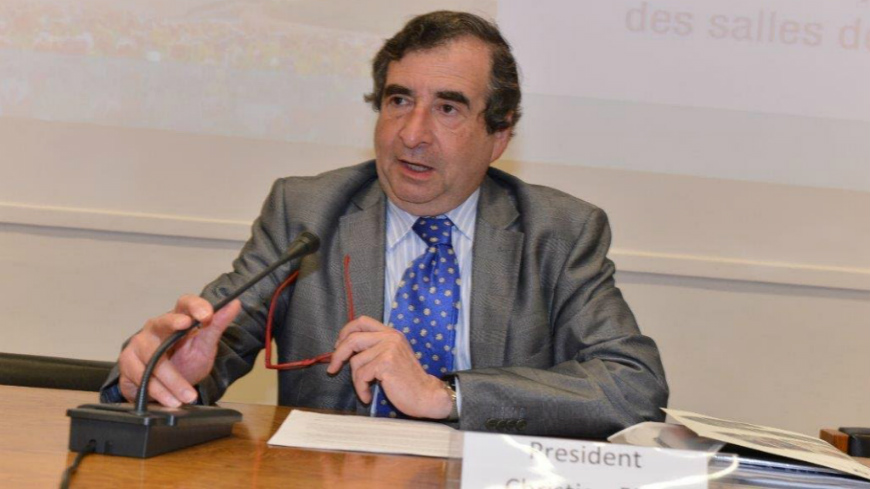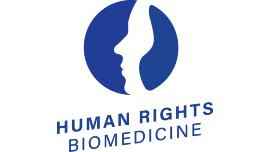Christian BYK, who was born in 1955, is a judge at the Paris Court of Appeal and chairs the science ethics committee of the French National Commission for UNESCO (CNFU). Since the beginning of the 1980s, Christian BYK has acquired training and experience in the areas of bioethics and ethics in the sciences. He studied international law and is very familiar with the functioning of the international organisations in the UN system (UNESCO, WHO, WIPO, IAEA) and the European institutions (Council of Europe and European Union). For over ten years, he was the head of the French delegation to the Council of Europe’s Committee on Bioethics, then advisor to the Secretary General of the Council of Europe, and prepared the first draft of the European Convention on Biomedicine and Human Rights. He has also taken part in the standard-setting activities of the European Union (on patentability of biotechnologies). Since the late 1980s he has participated in UNESCO’s bioethics activities and taken part in the negotiations which resulted in the adoption of three UNESCO declarations in this sphere. He has been involved in the activities of the CNFU since 2002 and has worked with various non-governmental organisations. Since 1989 he has headed the International Association of Law, Ethics and Science. He was Vice-President of CIOMS from 1994 to 2000 and is a founding member of the International Association of Bioethics. Since 2017 he has been the Chair of UNESCO’s Intergovernmental Bioethics Committee.
________________
1. The Additional Protocol to the Convention on Human Rights and Biomedicine on the prohibition of cloning human beings was opened for signature in Paris on 12 January 1998. Twenty years on, what can we say about what the adoption of this protocol meant?
On 2 April 1996, with the announcement by the research scientists, Ian Wilmut and Keith Campbell, of the birth of the sheep, Dolly – which would live for seven years – we were faced with the fact that a viable mammal had been born as the result of a “genetic manipulation”, using cells from the mammary gland of an adult ewe, whose cell nucleus had been transplanted into the enucleated egg cell of another ewe. If we recall that in 1994, in the United States, 17 non-viable human embryos had been cloned and grown, some to a relatively advanced age, this new step in the implementation of the reproductive cloning process somewhat validated the concern expressed in 1982 by the Parliamentary Assembly of the Council of Europe (Recommendation 934 (1982) on genetic engineering), when it had called for “the right to inherit a genetic pattern which has not been artificially changed” to be incorporated into the European Convention on Human Rights.
Drawing on its experience in producing legal and ethical rules concerning biomedicine, the Council of Europe, which was completing its drafting of the Oviedo Convention, which was opened for signature on 4 April 1997 and called for protocols to be drawn up in specific areas, was able to use this event as an opportunity to respond in an exemplary manner.
The Council of Europe’s Steering Committee on Bioethics managed to prepare the protocol on human cloning within the extremely short time span of one year, the text being opened for signature in Paris on 12 January 1998.
The preparation of this protocol also shows the potential that an international organisation has to transform the desire of states into a legal instrument, in agreement with the scientific community and public opinion, and hence to make international law a guardian of universal principles by setting significant limits on the use of scientific techniques.
2. What does this legal instrument represent at international level today?
The recent announcement of the birth of two cloned macaque monkeys testifies for the relevance of the concerns which guided its drafters.
By prohibiting reproductive cloning, whereas there are more diverse ethical positions on therapeutic cloning, the protocol places emphasis on what seems to the human community to be a key component of its identity, namely a method of reproduction which preserves the unpredictable and insuperable features of individuals, thus contributing to the acknowledgement and protection of their singular nature. At a time when other scientific advances (CRISPR-Cas9, new genome sequencing techniques and artificial intelligence) hint at the possibility of fresh transgressions of “human nature”, the protocol invites us to contemplate a continuing pattern of setting “anthropological” restrictions.
It was on a legal level that this text so clearly reflected our contemporary understanding of what a human is and should be: it is seen as a biological and genetic reality which, through certain common intangible features, characterises it as a species. Already, the protocol has served as a model for other international texts such as the EU Charter of Fundamental Rights (2000, Article 3.2), the Universal Declaration on the Human Genome and Human Rights, adopted at around the same time (UNESCO, 11 November 1997, Article 11), and the Universal Declaration on Bioethics and Human Rights (UNESCO, 19 October 2005, “Article 16: The impact of life sciences on future generations, including on their genetic constitution, should be given due regard”). The protocol has also encouraged the development of many national laws or the recognition by certain countries of the need to protect the human species.
In addition, the birth of the two cloned monkeys may prompt us, in these times when international law has been turning increasing attention to respect for biodiversity , to wonder whether it may be an idea to adopt rules concerning animals. The closeness of these primates to humans does indeed call on us to weigh up the interests carefully. On the one hand, as those who successfully carried out this cloning experiment assert, it does provide us with an animal model through which to find out more about certain human diseases but, on the other, it means that we must think about ways of giving this research an appropriate ethical and legal dimension.
3. Recent technological developments in the biomedical sphere have given rise both to great hopes, particularly where it comes to improving human health, and to concerns about the misuse that could be made of them. Do you believe that the process of drawing up this instrument and the Council of Europe’s working methods in the bioethics field may be a particularly appropriate means of meeting the human rights challenges raised by these developments?
This type of instrument belongs to a “strong” category of international law, which imposes obligations on states and is particularly appropriate when the international community is in a position to set limits in principle on an activity, in this case a scientific one. However, international co-operation also includes other types of instrument (ranging from Recommendations to best practice guides) which are more likely to steer public policy in the area of science and technology on a practical level because they deal with their functioning in detail and involve those who implement these technologies while leaving states a degree of discretion to regulate them at national level.
What makes the Council of Europe special is that it has a large number of these tools and has built up recognised expertise in the ethical and standard-setting approach to biomedicine since the 1970s. The fact that most of the states in “Greater Europe” are now members and that the Organisation is perceived as a human rights body, with the key role played by the Court to make this leadership effective, is an asset which should enable the Council to extend its competences to the areas of ethical concern raised by the emerging technologies.
In doing so, it will probably have to make its operating methods more cross-sectoral so as to combine the various tools placed at its disposal and take advantage, with states and civil society partners, of the new forms of governance that are essential in our new techno-scientific societies.











